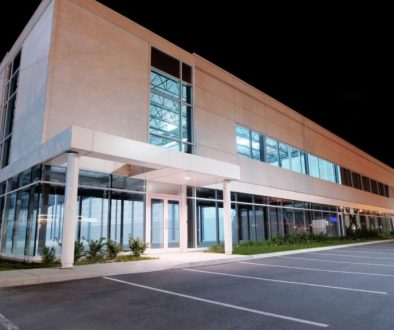Key Lease Clauses Every Landlord Should Understand
Understanding key lease clauses is crucial for landlords to protect their interests and ensure smooth rental agreements.
Key Lease Clauses Every Landlord Should Understand
As a landlord, navigating the complexities of lease agreements is a critical component of managing rental properties successfully. A well-structured lease not only outlines the rights and responsibilities of both landlords and tenants but also serves as a legal safeguard in case of disputes. In this blog post, we will delve into the essential lease clauses that every landlord should comprehend. From payment terms to maintenance obligations, we will provide a comprehensive overview of each clause, its implications, and best practices for drafting a lease that protects your interests while fostering a positive landlord-tenant relationship.
Understanding Lease Terms and Conditions
The first step in creating a solid lease agreement is to understand the various terms and conditions that are typically included. A lease is a legally binding document that outlines the rights and responsibilities of both parties. Essential elements include:
- Lease Duration: Specify the length of the lease, whether it’s a fixed-term lease (e.g., one year) or a month-to-month agreement.
- Rent Amount: Clearly state the monthly rent and any stipulations regarding increases.
- Security Deposit: Outline the amount required, conditions for its return, and permissible deductions.
Understanding these fundamentals sets the stage for more detailed clauses that will follow.
Payment Terms
The payment terms are one of the most critical elements of a lease agreement. It specifies how and when rent should be paid. Here are key aspects to consider:
- Due Date: Clearly state the day of the month when rent is due.
- Accepted Payment Methods: Specify how tenants can pay their rent, whether through checks, online payment systems, or direct bank transfers.
- Late Fees: Define the penalties for late payments, including the grace period and how fees will be assessed.
For instance, many landlords implement a late fee of 5% of the rent if payment is not received within five days of the due date. This clause incentivizes tenants to make timely payments and protects the landlord’s cash flow.
Maintenance and Repairs
Establishing clear maintenance responsibilities is vital to avoid conflicts down the line. This section of the lease should delineate which party is responsible for repairs and maintenance of the property. Consider these elements:
- Landlord Responsibilities: Generally, landlords are responsible for structural repairs, plumbing, and heating systems.
- Tenant Responsibilities: Tenants often are responsible for minor repairs and upkeep, such as changing light bulbs or maintaining yard space.
- Notification Procedures: Include procedures for reporting maintenance issues, including timelines for when repairs will be addressed.
By clearly defining these responsibilities, landlords can minimize disputes and ensure that necessary repairs are addressed promptly.
Renewal and Termination Clauses
Lease agreements should also include clauses that address the renewal process and termination conditions. These clauses provide clarity on what happens at the end of the lease term:
- Renewal Process: Specify whether the lease will automatically renew and under what conditions. If not, detail how much notice tenants must give if they intend to move out.
- Termination Conditions: Outline the grounds for terminating the lease early, such as non-payment of rent or violation of lease terms.
- Notice Period: Define how much notice both parties must give before terminating the lease.
Clear renewal and termination clauses protect both landlords and tenants by preventing misunderstandings and ensuring a smooth transition, whether the tenant decides to stay or move on.
Use of Premises
Another important clause is the use of the premises, which governs how the property can be used. This clause can include:
- Residential vs. Commercial Use: Specify if the property is for residential use only or if commercial activities are allowed.
- Subletting Policies: Indicate whether tenants are allowed to sublet the property and under what conditions.
- Restrictions: Address any restrictions on activities, such as prohibiting illegal activities or limiting the number of occupants.
This clause helps maintain the property’s integrity and ensures that tenants adhere to appropriate use guidelines.
Pet Policy
Given the prevalence of pets in households today, including a pet policy in your lease is essential. This policy should cover:
- Pet Allowance: Clearly state if pets are allowed or prohibited.
- Pet Deposits: If pets are permitted, specify any additional deposits or fees required for pet ownership.
- Conduct and Responsibilities: Outline tenant responsibilities for pet behavior, including noise control and clean-up.
Having a clear pet policy can help prevent disputes and ensure that all tenants are on the same page regarding pet ownership.
Insurance Requirements
Including a clause regarding insurance is increasingly common in lease agreements. This clause can specify:
- Tenant Insurance: Require tenants to obtain renter’s insurance to protect their personal property.
- Liability Insurance: Consider requiring liability insurance to cover damages or injuries that occur in the unit.
By addressing insurance requirements, landlords can mitigate their risk and ensure that tenants are adequately covered.
Dispute Resolution
In any rental relationship, disputes can arise. Including a dispute resolution clause can provide a structured approach to resolving conflicts:
- Mediation: Specify the process of mediation before escalating to legal action.
- Arbitration: Consider including arbitration as a binding resolution method.
Having a clear path for dispute resolution can save both parties time and money and foster a more amicable relationship.
Indemnity Clause
An indemnity clause protects landlords from legal liability in certain situations. This clause can address:
- Liability Coverage: Specify that tenants are responsible for any injuries or damages that occur on the property due to their actions or negligence.
- Legal Fees: Outline that tenants may be responsible for legal fees incurred by the landlord due to tenant-related issues.
This clause can provide peace of mind to landlords, knowing they have legal protections in place.
Compliance with Laws
Lastly, it is crucial to include a compliance clause in the lease that states:
- Legal Adherence: Tenants must comply with all local, state, and federal laws while residing on the property.
- Property Regulations: Highlight any specific regulations relevant to the property type or location.
This clause ensures that tenants understand their responsibilities regarding legal compliance, reducing the risk of legal issues for landlords.
Conclusion
In conclusion, understanding key lease clauses is essential for landlords to protect their interests and maintain a positive relationship with tenants. By including comprehensive clauses regarding payment terms, maintenance responsibilities, renewal processes, and more, landlords can mitigate disputes and ensure smooth transactions. A well-drafted lease agreement not only safeguards the landlord’s investment but also promotes a clear understanding of expectations for tenants. As you embark on your journey as a landlord, take the time to craft a lease that reflects your values and protects your interests. If you need assistance or want to explore potential rental properties, contact us today for expert guidance and support.



